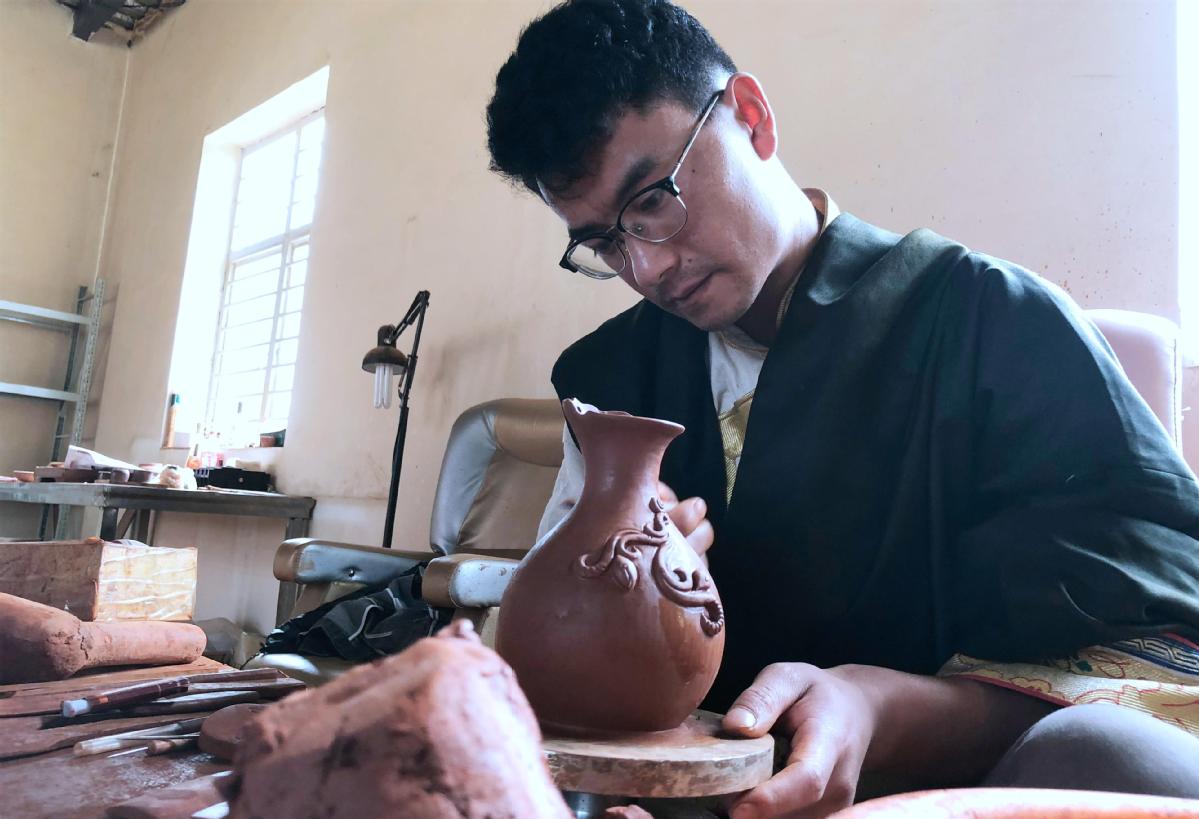Heritage revitalization faces hurdles


Policy support
Intangible cultural heritage, especially the inheritance of traditional handicrafts, is a great contributor to poverty alleviation, the Ministry of Culture and Tourism said early last month.
The development of new generations of craftsmen has long been stressed by the ministry, with a training program focused on improving traditional inheritors' awareness of heritage development carried out two years ago.
Eleven workshops have been established since 2016 with support from the ministry and academic institutes including the Central Academy of Fine Arts.
Impoverished areas that are rich in cultural heritage have been given preference in recent years in a program designed to let newly trained craftsmen lead residents out of poverty, the ministry said.
Lu Zhijun, director of Diqing's tourism development commission, said: "Intangible cultural heritage is a key element to develop rural tourism. It's also a treasure to help improve residents' incomes."
The inheritors of traditional crafts and cultural performances are encouraged to use their skills to help attract tourists, Lu said, and also open workshops to create jobs for people in poverty.
"Allowances will be given to the inheritors by the central government and provincial-and county-level authorities to allow them to concentrate on heritage preservation and development," he said.
The central government financial grant to top-ranked-State-level-inheritors doubled in 2016 to 20,000 yuan ($2,940) a year, Lu said.
Dadrin Pheldub, who was named a State-level inheritor of Nixi black pottery-making skills by the Ministry of Culture and Tourism in May, is using his workshop to lift villagers out of poverty, with six of the craftsmen working there coming from impoverished households.
"The villagers once said that those who are smart will go into politics, while those with clever hands will be left in the village to make pottery," he said. "We want it to change. We are here so that poor villagers can make a better living in the workshop instead of being forced to leave their hometown."
He said residents with disabilities, and the impoverished, have been welcomed into the workshop and women, especially housewives, are being encouraged to join in.
Losang Shepa said the workshop has become popular with travelers seeking a cultural experience.
"We receive about 50 visitors every day during the peak season from May to October," he said. "It's a good way to preserve the heritage and also a good way to help lift my poor neighbors out of poverty by developing tourism."
The workshop made a profit of 2 million yuan last year. "Workers usually spend around 6 months making pottery here, and earn about 50,000 yuan over that period," Losang Shepa said.
Future development
Lu said that in addition to the nurturing of talented new craftsmen, heritage preservation and tourism development also require convenient transportation and abundant financial support.
"About 450 million yuan will be invested in culture and tourism development (by the prefectural government) in the next three years, of which 300 million yuan will be channeled to the preservation and development of the prefecture's intangible cultural heritage to help boost rural tourism," he said.
Song said transportation will be improved in Tongle village, with a new road from downtown Weixi to open in December following a 10 million yuan investment by the county government in May.
Lu said Diqing's transportation network, including highways and air travel, will be improved this year.
He said the local tourism development commission had given about 58 million yuan in subsidies to airlines flying to Diqing last year. "Investment will continue to be channeled to the improvement of the transport network to offer easier access to visitors," Lu said.
He said the number of people flying to Shangri-La in Diqing prefecture this year is expected to exceed 600,000, up from 580,000 last year, and a high-speed train service from Lijiang to Shangri-La is expected to open in 2021.
























